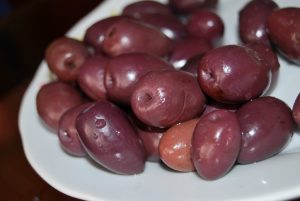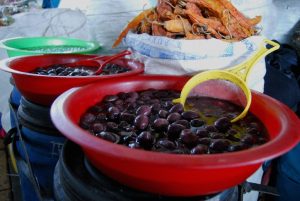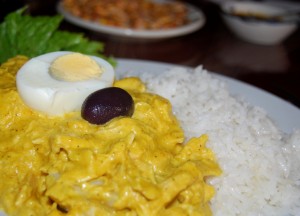Dark, Tangy, and Delicious: Peru’s Olives and Cuzco Cuisine

Dark purple, with a complex flavor that screams umami, that savory and tangy taste so unspoken in the West, Peru’s “botija” (bow-tea-hah) olives claim a world of their own. They have a history as old as Spain in the New World and have entered deep into the country’s cuisine.
Most of the country’s olives are destined for the internal market, primarily as ripe, cured, and tangy botijas, some as dried olives, and a smaller group as green ones. Nevertheless, Peru has been developing crops specifically for export, mostly to Brazil.
While the export industry involves more capitalization, management, and rigor of production, olives produced for the local market are mainly grown by small farmers with only some three to five hectares. Though olive trees are found in much of coastal Peru, the commercial production is almost entirely from the southern region of Tacna.

Most of the olive trees are varieties that originated in Spain or Portugal and the most common is a creole tree, one that though from Europe has been in Peru for centuries and adapted to its landscape, called “sevillana”, which simply means “from Seville”.
This variety produces a fruit that when ripe is dark purple and rich. The ripe fruit is what the people want, unlike in other regions where olives are picked from green to almost ripe for processing. Following tradition, Peruvian fruit is picked when fleshy and dark—as if a woman at the peak of her charm—then cured and packed in vats.

In Cuzco, olives part of our traditional cuisine. We like them for their taste, but also because of the nutritional value they have. They give us minerals such as calcium iron and they also enchant children.
Olives come to Cuzco in large trucks from the Peruvian coast, from Tacna, Ica and Pisco. They come in large vat like containers we call “bidones”. The olives are packed in a brine to preserve them.

Olives are sold in all the markets and supermarkets of Cuzco. They are generally sold by grams or kilos. The price varies according to the quality of the olive. You are invited to taste the olives before buying in Cuzco’s markets, so that you can find the best olive for your needs.
When you go to the markets you will see a variety of olives, varying by size and somewhat in color and taste. Most will be the purple black botijas. But there will also be some green olives and maybe even some dried ones. While the dried and brined olives are dark and ripe, the green olives were picked while immature to give them a distinctive, light flavor.
The olive trees produce fruit in the months of April through July and in those months our markets fill with an abundant supply.
Olives are a fundamental ingredient for a range of foods in Cuzco. We use them for the tamal cusqueña (the Cuzco style tamale) and to make causa, stuffed potatoes (papa rellena), baked fettuccine (tallarín al horno), Perú’s signature aji de gallina, and of course our chicken escabeche, among others.

When I was little my father and uncle would bring vats of olives back from the city of Tacna when they would travel. Every day we would eat olives with bread for breakfast, especially with our Oropesa or chuta breads.
There were so many olives we could not begin to eat them up, even in three or four months. We would have contests to see who could eat the most. My mother would tell us that olives had lots of nutritional value and that if we ate more than four olives it was like eating ¼ kilo of meat.
The olives at the bottom of the vat were the most cured. Though wrinkled from sitting in the brine so long, they were delicious and different from the others. We liked them a lot.
The Peruvian government provides this information on Peruvian olives.




